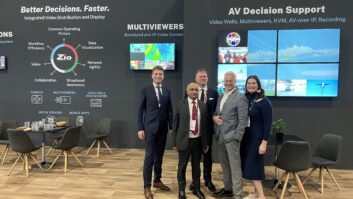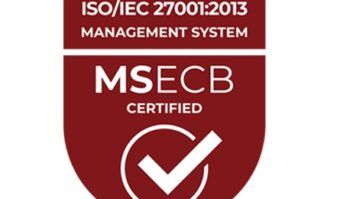
The move towards an all-IP, multiscreen media consumption model has transformed the way we access content. Organisations are now looking at multiple connected devices, which are all able to receive video both on secure LAN networks and WiFi. Under these circumstances, it is easy to forget content protection requirements and the need to secure your AV solutions as you would your IT.
Most integrators will be familiar with High-bandwidth Digital Content Protection (HDCP) and the concept of Digital Rights Management (DRM), end users may not. For them, the requirements are simple: have relevant content made available to their staff, guests or visitors in high quality. In many ways, end users are adopting the same attitude they do with the multiscreen services they use at home: authorisations are seamless and completely invisible, but present nonetheless.
Making sense of the security conundrum
For anyone looking to offer an IP video service, content security should be a fundamental consideration. This translates into a number of standards in the AV industry, of which HDCP is the most common. HDCP prevents copying of digital audio and video content over physical connections, such as DisplayPort, DVI and HDMI connections but now also provides for protection over IP.
Intended originally to protect content between a small number of locally connected devices, its implementation over IP remains the same. Once protected by HDCP, this protection must be maintained from source to destination. Recent innovations in HDCP, such as HDCP Pro, have also enabled the distribution of the protected content to an almost unlimited number of devices, with the main remaining constraint being the geographical reach of the network.
Each device used to receive, transmit and deliver video over IP needs to be fully secure and integrated with each other to avoid weak links across the system. End users will already know which solutions they want, or they may be looking for specific requirements that the integrator needs to meet, such as the overall price of the project or very high picture quality. These demands need to be met with solutions that provide both the right quality of service and the highest level of content protection. Ensuring the devices are fully secure for content protection also goes a long way to meeting those IT security requirements.
Protecting content for the masses
This is particularly crucial for environments where multiple people will be able to access the same content, often at different times, such as the hospitality industry or student accommodations.
Many universities are providing premium content to students and lecturers. The problem this can pose for AV managers is that this information is passing through multiple networks to various devices that may not all be automatically recognised or authorised. Keeping the content secure so that only the intended people can see it while keeping costs of maintenance low is key. It is not always sufficient to protect the content from unauthorised access using a protection technology like HDCP; it may also require the use of a DRM solution to control who gets access to what and when.
Naturally, content owners insist that their content is suitably protected however and wherever it is distributed. In the hospitality industry, hoteliers are increasingly looking to provide ‘early release’ window access to content, making strong security even more of a priority. To create a ‘better than home’ experience authorisations have to be kept as simple as possible. Ultimately, security considerations should be completely invisible to guests and only be managed by the AV team in a centralised way.
Being equipped with the latest content protection solutions is a fundamental step for end users and integrators to ensure the secure end-to-end delivery of premium content. By deploying protection systems like HDCP Pro or DRM solutions such as ARRIS SECUREMEDIA, Verimatrix and Samsung LYNK DRM, we ensure that our customers can easily meet the security requirements of the content industry.







